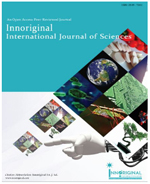PESTICIDE ACTIVITY OF CALENDULA / MARIGOLD THROUGH VERMICOMPOSTING
Abstract
Marigold waste and vegetable waste disposed from Koyambedu market were collected and it was degraded by Eisenia fetida (Lumbricidae) earthworms .NPK levels was checked by FCO method after 60 days. Antimicrobial activity was also checked by marigold fertilizer on different plant pathogeniec bacteria(Pseudomonas syringae, Erwinia carotovora, Xanthomonas citri).After 60 days spinach seeds were sowed in the soil and vermicompost (vegetable fertilizer and marigold fertilizer). NPK levels increased by 60% and 75% respectively.Zone of inhibition was formed by marigold fertilizer on Pseudomonas syringae and Erwinia carotovora. During the period of study, data were collected on reproductive strategies of earthworms and the number of earth worms was found to be increased. spinach grows well without any disease using marigold fertilizer, which shows marigold may be having pesticide activity.References
REFERENCES:
Kaviraj, Sharma S. (2003) Municipal solid waste management through vermicomposting employing exotic and local species of earthworms. Bioresource Technology 90, 169-173.
Kale R.D, Vermiculture Scope for the new biotechnology , in Earthworm Resources and Vermiculture ( Zoological Survey of India,Cacutta) 1993, 105-108
Lehman,P.S.1979. Factors influencing nematodes controls with marigold. Florida Dept. of Agriculture conservation service,Nematology Service ,circular no.50. April 1979.
Mcclure susan 1994. Companion planting .rodale press.ISBN 0-87596-616-0.
Dumenil G, Chemli R, Balansard C, Guiraud H, Lallemand M (1980). Evaluation of antibacterial properties of marigold flowers (Calendula officinalis L.) and mother homeopathic tinctures of C.officinalis and C. arvensis L., Annales pharmaceutiques francaises 38(6): 493-499.
Radioza SA, Lurchak LD (2007). Antimicrobial activity of Calendula L. plants, Mikrobiol., 69(5): 21-25.
Aalok,A ; Tripathi,A.K.Sonl,P.(2008) vermicomposting method.
Bauer AW, Kirby WMM, Sherris JC, Turck M (1966). Antibiotic susceptibility testing by a standardized single disk method, Am. J.Clin. Pathol., 45(4): 493-496.
Bhawalkar,U.S,Vermiculture Biotechnology for LEISA , seminar on low external input agriculture,Amsterdam,Netherlands,1991.
B.T.Hunter, â€Gardening without poisons†,2nd ed., Berkley; Newyork,1964;P.46.(Google Scholar)


